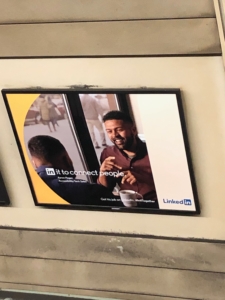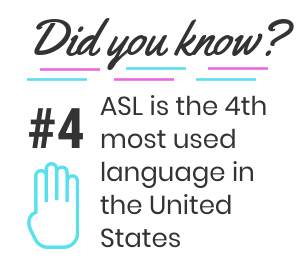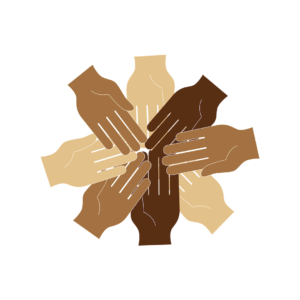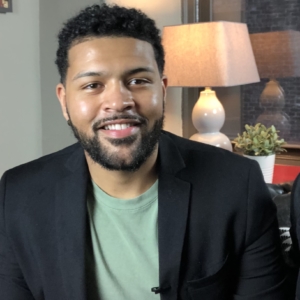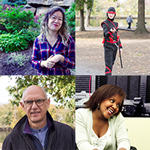Faces Behind the Screen: Aaron Pagan
Quick Links
<< Return to all “Faces Behind the Screen” stories
Extended Cut: In It To Connect People
Part 1
You may have seen Aaron Pagan recently on TV, signing in LinkedIn’s “In It To Connect People” commercial. It’s not every day you see people signing ASL on television, and this commercial caught our attention! We were so excited to interview Aaron to learn his story. Below, Aaron shares his job-hunting experience, the challenges he faced, and how he got involved with LinkedIn to spread awareness.
Do you identify as d/Deaf or hard of hearing?
AARON PAGAN: I identify as deaf because growing up – I was born deaf, actually. I was born with severe to profound hearing loss. By the age of two or three, my mother had gotten hearing aids for me. My older brother, Adam, who’s about three years older than me, was born deaf as well. So my mother got us hearing aids at a very young age, which is why we are so fortunate to be able to communicate verbally when necessary. For that, I thank my mother. Once I take off my hearing aids I can’t hear a thing. A lot of people find that very strange, but hearing aids help me know what’s going on around me. I don’t hear everything, but I hear enough to be able to communicate orally. A lot of people would assume that I identify as hard-of-hearing because I can talk. But once my hearing aids come off, it’s pure silence. That’s why I identify as deaf.
Did you experience discrimination during your job search?
AARON PAGAN: Yes, I do feel like there’s discrimination. I have been to several interviews – I don’t typically tell them that I’m deaf – because maybe they would shy away. Everybody has this notion that deaf people aren’t able or capable to do any other job that they do, whether it is marketing or whatever the case may be.
I’ve had a couple of interviews where I felt like I knocked the ball out of the park. But it’s always, “oh, we found a different – a better – we found a candidate more fitting.” It always leaves me the question, “Why am I not good enough?” I started to believe that at one point. But I know that if there’s no opportunity granted to me, I have to create the opportunities. And that is true for a lot of deaf people. You see a lot of deaf entrepreneurs. You see a lot of deaf people trying to be more involved in visual jobs like art or film.
It’s a constant battle about having to prove ourselves. I have had several interviews that were absolutely not deaf-friendly at all. One interview had about seven people sitting at one table talking to me at the same time. So it’s a constant game of, do I tell them I’m deaf from the get-go? Or do I let them find out at the interview? And then I risk not having an interpreter if I do that. So it’s a lot of questions that come into play before actually committing to an interview. So it’s definitely tough. It is.
How did the opportunity for this commercial come about?
AARON PAGAN: I did a personal project with a friend of mine. And she filmed me – a day in the life of a deaf New Yorker. And LinkedIn saw that, and they were like, hey, we really like it. And would you be interested in doing a commercial with us? And from there, you know, it was all about networking and sharing my story with them. And they actually had a few people to choose from to shoot the commercial with, but they chose me. So it was a blessing to be able to have that opportunity.
Individuals who are deaf, or hard-of-hearing, or have any sort of sensory impairments to get their names out there and show that they’re equally as capable. So hopefully they continue to do that as well.
Someone from their Diversity and Inclusion Office at LinkedIn personally reached out to me. She wants to collab on future projects to even talk about the lack of deaf and hard-of-hearing, or blind, or disabled people being hired at their corporation. And she just wants to make noise. And I think it’s great because it really takes one person to help. It takes a whole group of people to change, but it takes one person to begin to make that noise.
Part 2
Did you anticipate working in the accessibility world or did you end up working there by chance?
AARON PAGAN: I’ve always been an advocate for accessibility, even in high school and college, always making sure that my circle of friends, or whoever was around me had proper access to everything. Even going to music concerts, we had to fight for our interpreters.
I once went to a Beyoncé concert, and they promised me interpreters. Well, once I got there, they didn’t have them. They had forgotten to hire them. So I was obviously upset. But they gave me better seats, which didn’t really fix the problem. I did get to see Beyoncé up close, which is pretty cool.
It was pretty awesome. She’s a great performer. But I didn’t really like the fact that I couldn’t follow along with what she was saying in between sets, you know, like talking to the audience or really doing some poetry. Whatever the case, I couldn’t follow along. So I’m always an advocate or making sure that I get an interpreter when I need it.
I’m very assertive. I’m nice about it, and then if they are not really giving me what I need, I get pretty assertive. It also happened during a conference that I wanted to buy a ticket for last year. They ended up blocking me on Instagram.
A lot of people saw that and reposted it, reshared it. And they eventually ended up giving me free tickets to the conference, along with two interpreters. It’s strange that we have to fight for all of that. But getting into this field, I didn’t think I would get into it as soon as I did. And I think wherever my career takes me, I’m always going to have a voice for accessibility. Whether or not the job is directly related to it, I’m always going to be an advocate.
What would you say is your proudest moment?
AARON PAGAN: I would definitely say the LinkedIn commercial. I would be very shy during an interview. Nobody made me feel very comfortable. And the outcome is actually pretty dope. I would say definitely the LinkedIn commercial because the amount of coverage– the reach– is pretty great. They aired it during the Golden Globes and during the Academy Awards. And it’s pretty awesome. They’re doing it in select cities that they’re targeting. But I think that it’s so amazing because it’s like you don’t get to see this stuff on TV.
The best thing about it all is that I’m able to inspire and educate people. And if I can do that, then I’ve done my job.
What’s the best thing about being deaf?
AARON PAGAN: Definitely the culture. The culture is like no other. It’s like no other. There’s something about being in a deaf community that is like nothing else. Like, sure, we all have our differences with whatever, but we all can always communicate effectively. And that’s not an everyday thing for all of us. So when we are together, it’s like home, like a whole other level of confidence, a whole other level of feeling involved, feeling like you can participate.
I just really admire the deaf community most of all. How people stick together as well, it’s very heartwarming — I just love the community.
It’s also cool that I can just turn off my hearing aids when I don’t want to hear any BS.
Part 3
How did you land your current role at Purple Communications?
AARON PAGAN: I got the job through LinkedIn, of course. Someone had referred me. And my current supervisor there looked at my profile and saw my website at the time. He emailed me through my website and from there, I was hired within two or three days. We did a FaceTime interview – very informal – and he liked me, and here I am. It’s been three years that I’ve been working at Purple.
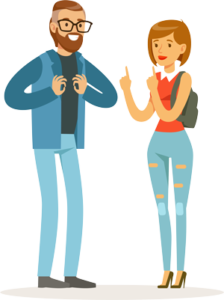
Since I did the commercial, a lot of deaf people have been reaching out to me and saying like, “yo, you’re so right.” I’m hoping to keep the momentum going because, you know, we need jobs, and we need good jobs, not the type of jobs where we have to drop off packages and do simple things that. You know, some people like doing it, which is OK. But most people do it because they feel that is the only way they can make money. I have several friends who had graduated from college with bachelor’s degrees and great GPAs, and they do not secure a job. It leaves me wondering why. What is the issue? It seems employers are afraid that we’re not capable of meeting their expectations.
What can hearing individuals do to help break the stereotypes around deaf and hard of hearing individuals?
AARON PAGAN: I would say hearing people need to expand their minds and need to educate themselves on what people are capable of. I don’t think it should take a success story for anybody to go, “oh, you know, maybe deaf people can do it.” But unfortunately, it is what they need. They need a lot of exposure. They need a lot of education.
I had some messages on LinkedIn, like, “hey, because of you, I have learned to be a little bit more compassionate towards people who have disabilities, those who are deaf, and it has definitely opened my mind more.” And that makes me feel good. But it’s like why should it have to be done? But it does need to be done. I think the deaf community needs to make noise. That’s the only way we can do it at this point.
I really appreciate LinkedIn for giving me the platform to educate people on the matter.
Do you use captions or any other assistive technology?
AARON PAGAN: Oh, yes. I use captions wherever I can, whether it’s while watching YouTube video, watching TV, Netflix. In college, I used captioning for classes. And the movies – I use it at the movies all the time. It’s not perfect at movies, but it does a good job.
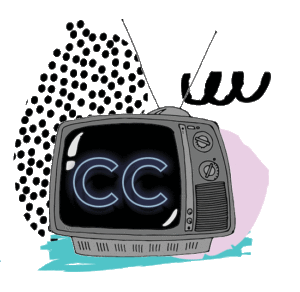
That’s pretty much the only assistive technology that I use to understand what’s being said. Another thing is my hearing aids, they are Bluetooth, which helps me a lot when I’m on the phone. For example, if I use my phone and I call somebody on FaceTime, I’m able to just direct the hearing straight to my hearing aids and block out everything else that is going on, kind of like headphones. It’s pretty, pretty, pretty cool.
Faces Behind the Screen is a storytelling project focusing on members of the Deaf and hard of hearing community.


